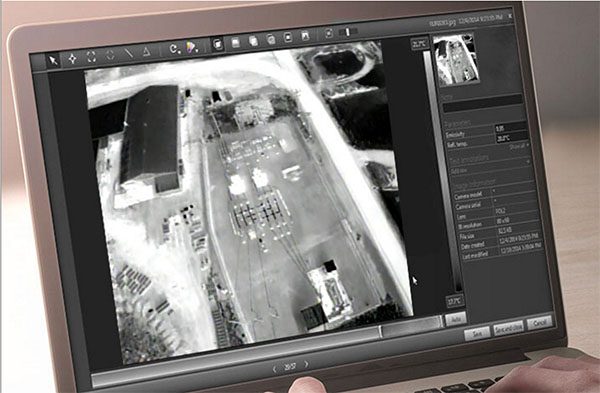
At the recent Commercial UAV Expo in Las Vegas, FAA attorney Dean Griffiths said that the three top requests for Part 107 waivers were for night operations, operations over people, and flight beyond visual line of sight (BVLOS.) Operations over people and BVLOS flight have received a lot of attention: the FAA says that based on recommendations from the Micro drone committee formed earlier this year, they will publish a proposed rulemaking on flight over people by the end of this calendar year. Amazon and others with a stake in drone delivery have been lobbying the FAA to ensure that BVLOS flight remains a priority. But for many industrial applications, night ops are just as critical – and could be less sensitive from the standpoint of safety concerns.
DRONELIFE spoke with FLIR Systems – global leader in thermal imaging for drones – to get a better idea of why night operations are so important for commercial drone operators. With the advanced technology in thermal imaging available today, explains Jay James, FLIR’s Vice President Worldwide Sales, daylight visibility is no longer necessary for safe flight. “You don’t need different equipment to fly at night,” says James. “With thermal imaging it doesn’t matter – you aren’t restricted to needing to ‘see’ during the day.”
Given that thermal imaging eliminates the need for daylight, there are numerous applications that require nighttime operations. Roof inspections to detect temperature variations that can identify problems, for example, are better performed at night after the sun has stopped warming the surface. Surveillance of infrastructure or property is more critical at night, when there are fewer staff to provide security.
“We could easily say that half of the usage is at night,” says James. “There are a lot of practical reasons.” James points out that drones are frequently used by law enforcement or emergency personnel to help document and evaluate traffic accident scenes – most of which, statistically, happen at night; as do most home fires. Search and rescue is also a time sensitive application often best performed by a drone, and one that cannot stop when the sun goes down.
Finally, one of FLIR’s customers, a drone operator who works on construction and inspection projects, pointed out that many clients simply prefer that drone work be done at night. A recent hospital job, for example, required it: night operations being deemed safer and easier to implement than flight over people. “There are just fewer people around,” he said. “It’s easier.”
Given the technology available – and the public’s nervousness about drones flying overhead – night operations seem like a reasonable solution to many concerns about safety. The FAA may have to move it up the priority list.

Miriam McNabb is the Editor-in-Chief of DRONELIFE and CEO of JobForDrones, a professional drone services marketplace, and a fascinated observer of the emerging drone industry and the regulatory environment for drones. Miriam has penned over 3,000 articles focused on the commercial drone space and is an international speaker and recognized figure in the industry. Miriam has a degree from the University of Chicago and over 20 years of experience in high tech sales and marketing for new technologies.
For drone industry consulting or writing, Email Miriam.
TWITTER:@spaldingbarker
Subscribe to DroneLife here.







[…] for flight at night are among the most common waivers that the FAA issues for commercial drone operators – but for recreational operators, there is no […]